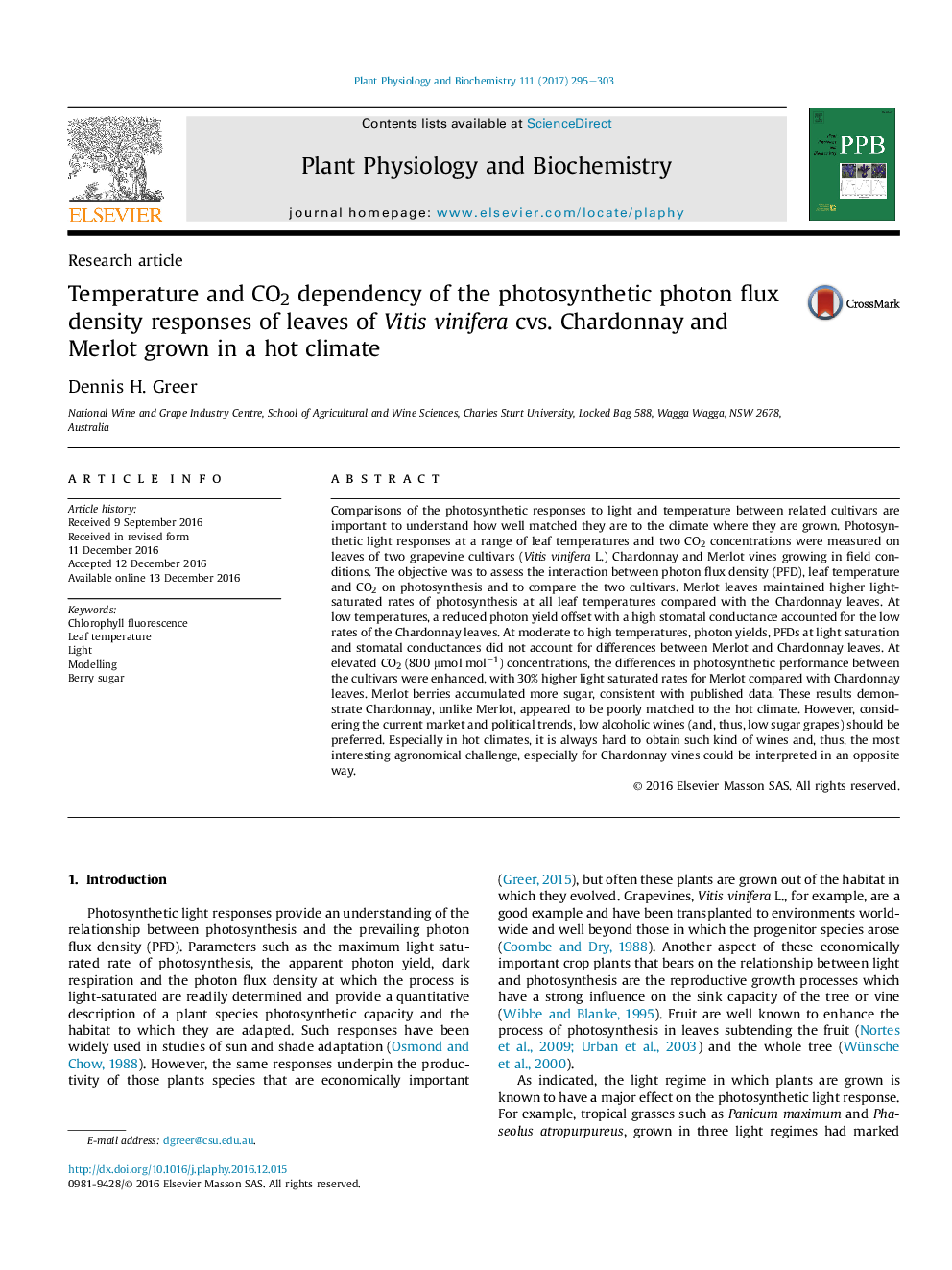| کد مقاله | کد نشریه | سال انتشار | مقاله انگلیسی | نسخه تمام متن |
|---|---|---|---|---|
| 5515554 | 1541910 | 2017 | 9 صفحه PDF | دانلود رایگان |

- Matching plant species such as grapevines to climate is an important consideration in determining crop productivity.
- Merlot had higher rates of photosynthesis compared with Chardonnay grapevines from 15 to 40oC, even at high CO2.
- More sugar was accumulated in Merlot berries suggesting Chardonnay grapevines were poorly matched to a hot climate.
Comparisons of the photosynthetic responses to light and temperature between related cultivars are important to understand how well matched they are to the climate where they are grown. Photosynthetic light responses at a range of leaf temperatures and two CO2 concentrations were measured on leaves of two grapevine cultivars (Vitis vinifera L.) Chardonnay and Merlot vines growing in field conditions. The objective was to assess the interaction between photon flux density (PFD), leaf temperature and CO2 on photosynthesis and to compare the two cultivars. Merlot leaves maintained higher light-saturated rates of photosynthesis at all leaf temperatures compared with the Chardonnay leaves. At low temperatures, a reduced photon yield offset with a high stomatal conductance accounted for the low rates of the Chardonnay leaves. At moderate to high temperatures, photon yields, PFDs at light saturation and stomatal conductances did not account for differences between Merlot and Chardonnay leaves. At elevated CO2 (800 μmol molâ1) concentrations, the differences in photosynthetic performance between the cultivars were enhanced, with 30% higher light saturated rates for Merlot compared with Chardonnay leaves. Merlot berries accumulated more sugar, consistent with published data. These results demonstrate Chardonnay, unlike Merlot, appeared to be poorly matched to the hot climate. However, considering the current market and political trends, low alcoholic wines (and, thus, low sugar grapes) should be preferred. Especially in hot climates, it is always hard to obtain such kind of wines and, thus, the most interesting agronomical challenge, especially for Chardonnay vines could be interpreted in an opposite way.
Journal: Plant Physiology and Biochemistry - Volume 111, February 2017, Pages 295-303